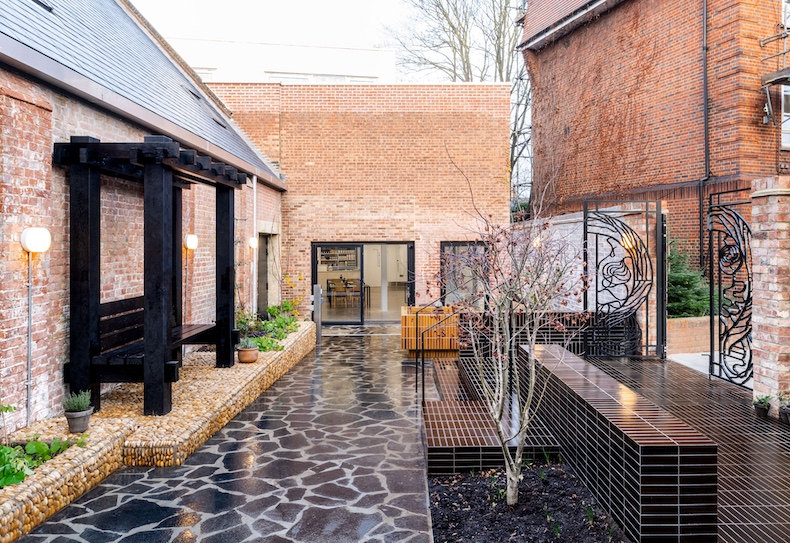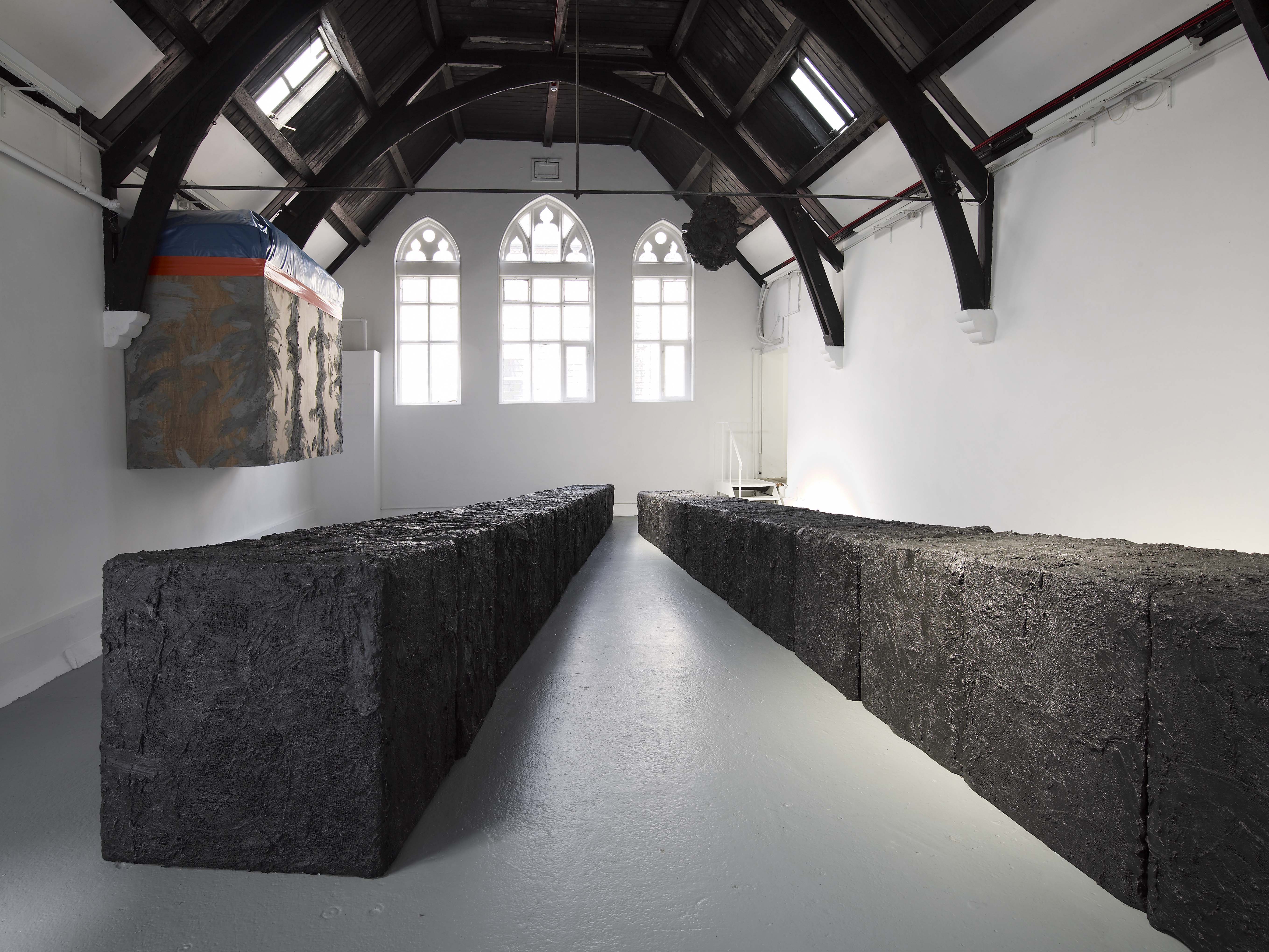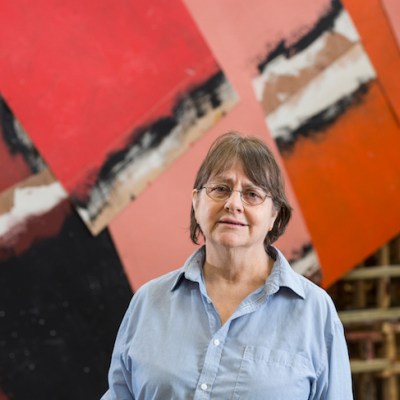At the end of August, the most successful exhibition in the history of Studio Voltaire closed. The show was ‘Beryl Cook/Tom of Finland’. There’s something very appropriate about Studio Voltaire, the small set of studios and gallery built around a converted chapel in Clapham in south London, putting on such a show. As Hettie Judah wrote in the July/August issue of Apollo, the show was unusual because, when she visited, ‘Everyone was smiling, which is frankly weird in an art gallery.’ Beryl Cook is not an artist that galleries beloved by the art world frequently exhibit. Finding joy in art and uplifting the overlooked or the unusual is something of a hallmark for the organisation, which celebrates its 30th anniversary this year.
Elvira’s Cafe (1997), Beryl Cook. Photo: courtesy the Beryl Cook Estate; © John Cook

Originally founded as an artist-run space on Voltaire Road, on the other side of Clapham High Street, Studio Voltaire moved to its current site on Nelson Row in 1994. It is now run by Joe Scotland, who went to art school but is happy to admit that he was ‘a really terrible artist’. While he might not have been a natural at making art, he says, ‘I was already interested in exhibition making.’ He came to the gallery as a studio artist, but was earning money by working at the Saatchi Gallery in its golden era on Boundary road, at the South London Gallery and at the Serpentine, where he spent six years as an invigilator and working front of house. Of this time, he says, ‘You really get to learn, you learn, particularly at the Serpentine. You learn so much, good and bad, just from observing.’ But it wasn’t just a grounding in how to run an arts organisation that Scotland was getting from his day job. ‘My family, we never went to galleries or museums,’ he says. ‘Cultural stuff just wasn’t part of my vocabulary.’ This was partly because of class. Scotland describes himself as coming from a ‘typical lower middle-class family, but probably working class the generation before.’ Gallery-going wasn’t part of the fabric of family life. ‘It was only coming out of Goldsmiths [art school] when I realised how things work and how it intersects with class. Working at the Serpentine really exposed that.’
Installation view of The Garden by Anthea Hamilton, 2021, which was commissioned by Studio Voltaire. Photo: FRENCH+TYE; courtesy Anthea Hamilton; © Anthea Hamilton

In some ways this explains why Studio Voltaire is so determined to be accessible. It runs workshops to bring in school children and the local community, it hosts teacher training events and it commissions artists for work beyond the gallery; the latter includes a two-year residency with Sunil Gupta who made work for Imperial Charities, which raises funds for the London-wide network of NHS hospitals. There are also community programmes that Scotland describes as ‘a really important opportunity for us to have a wide variety of people in conversations’. All of this sounds fairly similar to many other arts organisations who like to talk to about accessibility and attracting a wider audience. But Scotland has a slight air of mischief when he covers the same ground, which makes the topic less stifling than usual. As he says, ‘We do have some programmes on a local level, so it might be looking at undiscovered histories within Clapham. Clapham has a particular reputation and we try to counter that to some extent.’
The staging of shows and the running of programmes, however, is not cheap. Studio Voltaire, like so many organisations, has struggled in recent years. ‘Our grant [from the Arts Council] hasn’t increased in 16 years.’ It now accounts for four per cent of the organisation’s funding. But, as Scotland says, ‘Sixteen years ago, Studio Voltaire was a much smaller organisation.’ The staff has grown from four to 20. There are ‘strains’ on philanthropy and sponsorship because of the state of the wider economy in this country. Once partner that has stood by them is Loewe, whose support has allowed them to pay for a studio curator as well as maintain 51 on-site artists. Yet the 30th anniversary has allowed the organisation not only to stabilise its finances – Scotland says of the first charity auction, ‘It’s kind of weird, the money being thrown around’ – but also develop the Voltaire Future Fund to grow civic and artists’ development programmes.
Installation view of ‘Phyllida Barlow: Bluff’ at Studio Voltaire in 2010. Photo: Andy Keate; courtesy Phyllida Barlow/Studio Voltaire, London

This is all a far cry from discussing which artists to programme and working on the creative side of Voltaire. When I ask how it programmes its exhibitions there are clearly some guiding principles but nothing to explain how this corner of Clapham has become such an important home for contemporary art (when, for example, it was transformed into the Oscar Wilde Temple by McDermott and McGough in 2018). Scotland says, that ‘when it’s a commissioned artist, if it’s an international artist, it’s their first ever presentation in the UK. If it’s a UK-based artist, it’s either their first institutional show in London or the UK.’ But there’s a degree of leeway here. Phyllida Barlow was commissioned to make Bluff by Studio Voltaire in 2010. ‘I always slightly cringe when we talk about supporting underrepresented artists,’ he says, ‘because it’s so much more than that. It’s supporting good work.’
My conversation with Scotland takes place before he goes on his summer holiday and before the general election, before we knew who the government would be. At this year’s Labour party conference the new prime minister, Keir Starmer, said, ‘Everyone deserves the chance to be touched by art.’ He is not wrong, but he might not know what it entails. At a small, converted chapel in south London is an organisation that played a key role in the resurgence of interest in Phyllida Barlow, where Anthea Hamilton has designed a garden, and which has introduced countless international artists to a London audience. The work isn’t worthy, it’s idiosyncratic and arresting. I hope Scotland had a nice holiday because it looks like there’s still much to do.
Joe Scotland. Courtesy Studio Voltaire, London




